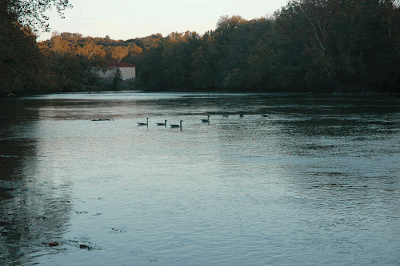The water sample I chose is from the Holston River.

I took a few pipettes of water to fill my Microaquarium: from the bottom layer containing soil, from just above the soil, from the middle of the water container, and skimmed off the top of the water. Drawing the samples in this way ensures diversity of microorganisms.
In addition to the water, we added aquatic plants Amblestegium varium and Utricularia gibba. Both plants will oxygenate the water sample, and Amblestegium varium will consume insects and insect larvae. The sample of Holston River water had a plant in it, and I put a couple of leaves of this into my Microaquarium.
Amblestegium varium (Hedwig) Lindberg. Moss.
Collection from: Natural spring. at Carters Mill Park, Carter Mill Road, Knox Co. TN. Partial shade exposure. N36 01.168 W83 42.832. 10/12/2014
Utricularia gibba L. Flowering plant.
A carnivorous plant. Original material from south shore of Spain Lake (N 35o55 12.35" W088o20' 47.00), Camp Bella Air Rd. East of Sparta Tn. in White Co. and grown in water tanks outside of greenhouse at Hesler
Biology Building. The University of Tennessee. Knox Co. Knoxville TN.
10/12/2014
Biology Building. The University of Tennessee. Knox Co. Knoxville TN.
10/12/2014
(McFarland 2014)
To attach the top of the Microaquarium, we used two small pieces of an adhesive called Blue Stik, one on each side of the lid. Initial observations sighted multiple organisms moving in the aquarium. Some could be seen on 40x magnification, others required 100x. I examined along the soil in my tank, and did not see any organisms there.
Beginning next week, there will be weekly updates on the Microaquarium including pictures of organisms.
Beginning next week, there will be weekly updates on the Microaquarium including pictures of organisms.
No comments:
Post a Comment